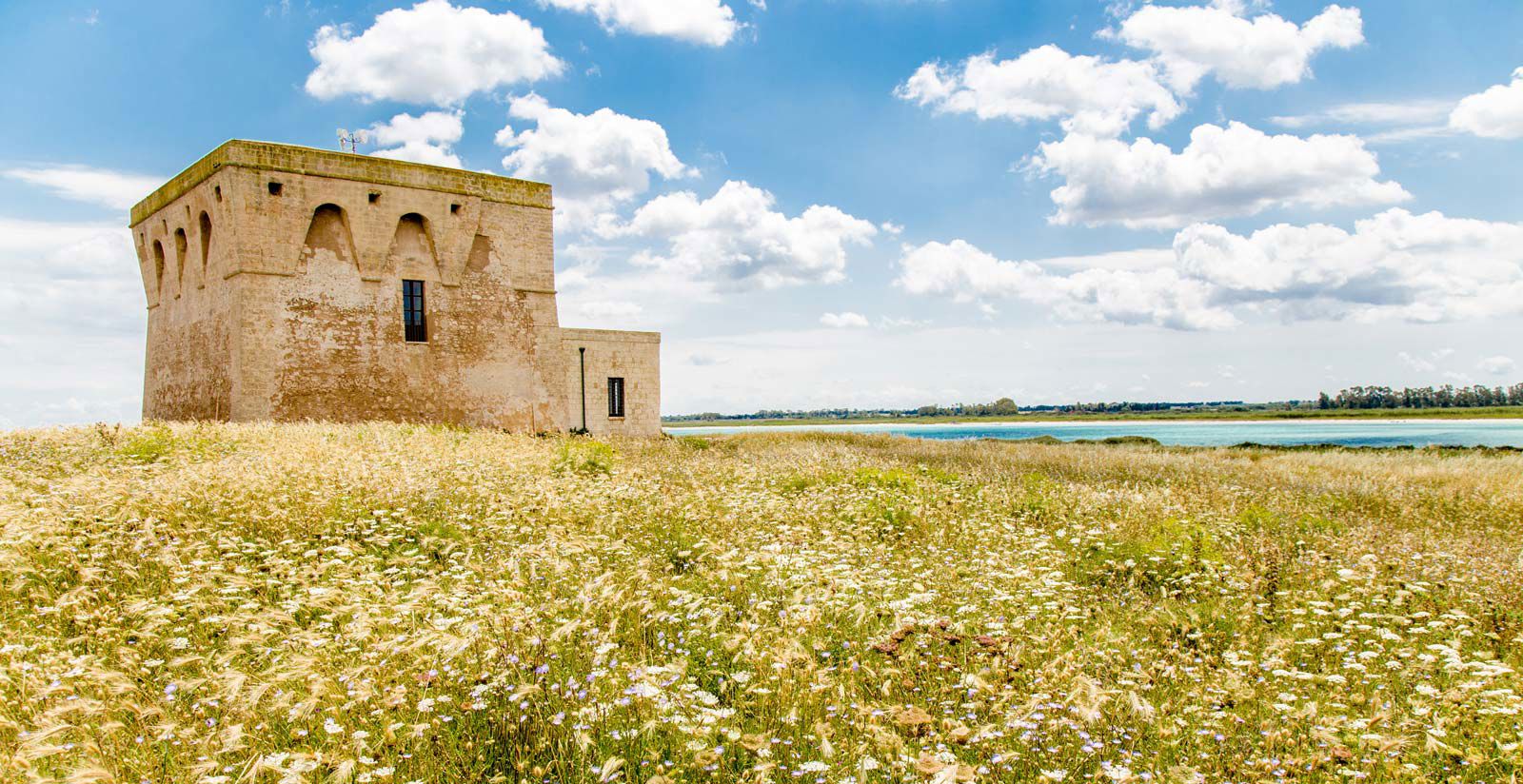DISCOVERING TORRE GUACETO
At about 22 Km from Palazzo Rodio and Ostuni there is the Natural Reserve of Torre Guaceto, one of the 16 best protected areas in the world. The Torre Guaceto State Nature Reserve covers about 1,200 hectares, with a seafront that stretches for 8,000 meters. The area looks like a more or less regular rectangle, with an average depth of 3,000 meters, crossed and divided by the SS n° 379 road.
Why is Torre Guaceto a protected area?
The characteristics of this area can be found in the coast and in the seabed, near the tower. The dunes are formed thanks to the combined action of the wind that moves the grains of sand towards the hinterland. The seabed is rocky and allows people to dive without problems. The stretch that stretches from Punta Penna Grossa to Torre Guaceto is characterized by a large sandy beach, surrounded by imposing dunes and fossil wetlands behind the dunes covered by a thick Mediterranean scrub, with numerous examples of holm oak and arboreal juniper.
After passing several rocky crescent-shaped bays, you reach the grassy plateau of the Torre di Guaceto, surmounted by a fortified building, located on a small promontory that closes the bay protected by three islets. Here, the sandy and linear coast is bounded by cords of active dunes and very evident fossils, whose back extends fragments of marshy areas. In particular, the first cordon of dunes is the backbone of the coastal relief and was formed during the Holocene era (about 11 700 years ago.)
The Terrestrial Reserve is characterized by Mediterranean scrub interrupted by agricultural areas mainly cultivated with olive trees and a dune ecosystem, characterized by sandy stretches alternating with rocky stretches. The terrestrial area also includes the brackish area that extends for about 12 km. The Terrestrial Reserve includes a Special Protection Area (SPA) pursuant to the Birds Directive and a Site of Community Importance (SIC) pursuant to the Habitat Directive.
In the hinterland we find holm oak forests and an undergrowth with arbutus, ilatro, lentisk and sarsaparilla, but also Brachypodietalia meadows are visible. Along the western cliff of the Reserve there is a habitat characterized by the presence of the statice, an endemic Apulian species and of sea fennel. In the marine protected area a further priority type habitat is the “Posidonia oceanica meadows”. The flora is rich in rare species, such as the Apulian heather, the marsh orchid, the bee-flower apra, the Apulian statice, the autumnal muscari, the striped vilucchio, the whitish plantain, the Byzantine gladiolus and the maritime crucianella , a very rare species in Puglia. The fauna is varied in that, offering refuge to migratory birds, it represents a biotope of particular naturalistic and ornithological value. Furthermore, in 1981, Torre Guaceto was declared a Wetland of International Importance according to the Ramsar Convention (Iran, 1971).







